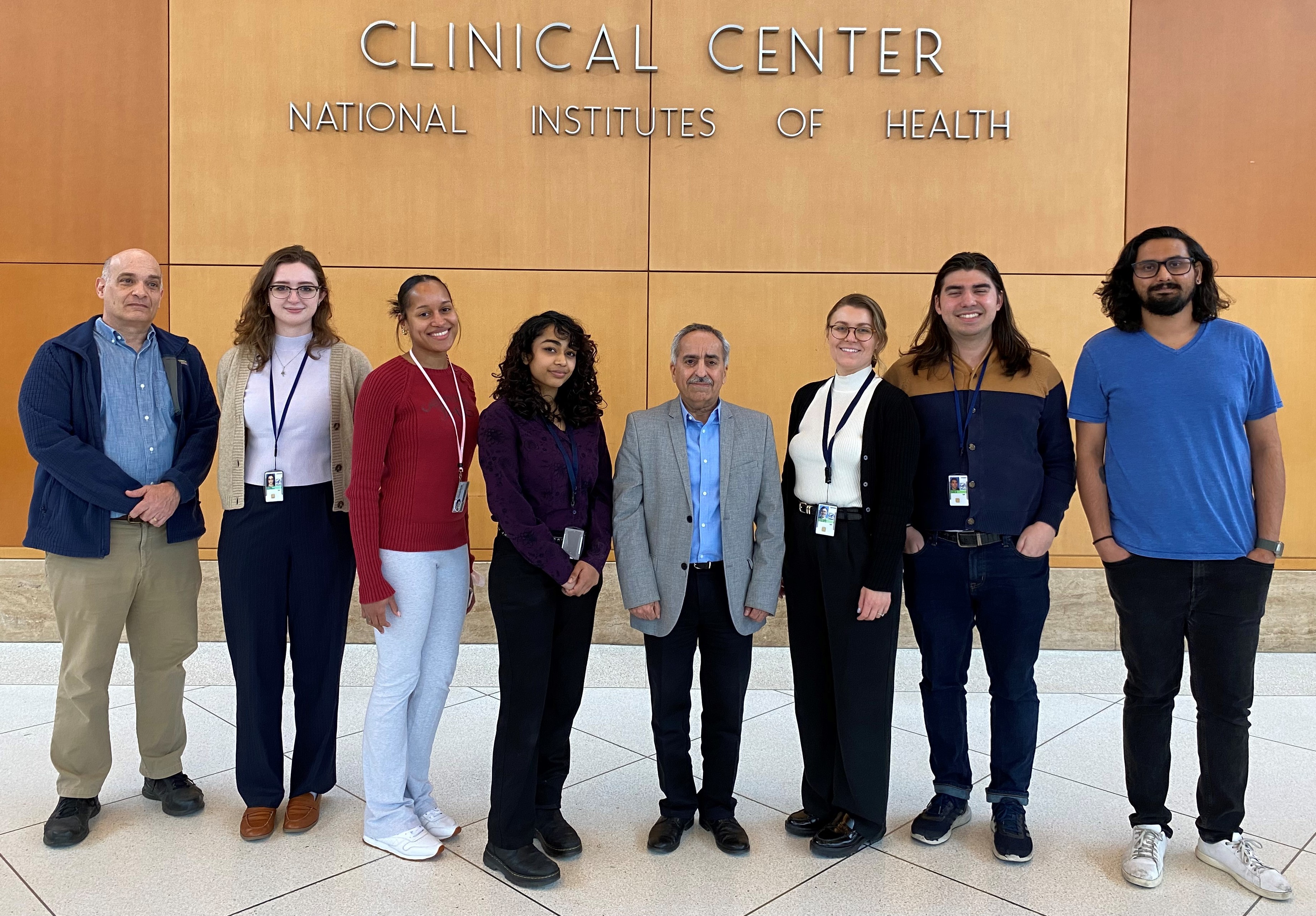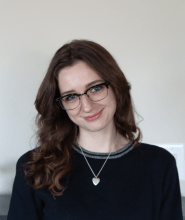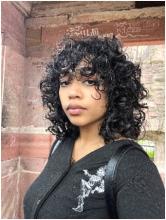Clinical NeuroImaging Research Core (CNIRC)


Contact Information
- Office: (301)451-6972
- Mailing Address
National Institute on Alcohol Abuse and Alcoholism National Institutes of Health
10 Center Drive, MSC 1108
Bldg. 10, CRC, Room 1-5330
Bethesda , MD 20892-1108
Overview of the Lab
What we do
The Clinical NeuroImaging Research Core (CNIRC) serves two functions: Conducting independent addiction neuroimaging, neuropsychophysiological, and neuromodulation studies as well as providing expertise in these areas, through collaborations and support to clinical investigators.
Research interests include:
- Investigate the neural correlates of cognition, emotions, decision making, motivation, impulsive and compulsive behaviors, and their association with alcohol use disorder (AUD).
- Neurocircuitries associated with stages of alcohol use and misuse.
- Examine the dynamic relationship between brain structure and function and alcohol use disorders.
- Utilize imaging phenotypes to establish efficacy of experimental treatments and therapies.
- Utilize imaging biomarkers to determine treatment choice and predict treatment outcome and relapse.
- Utilize novel approaches to further refine alcohol use disorder subtypes and their treatments by combining imaging phenotypes and psychophysiological data.
- Employ novel neuromodulation approaches such as real time EEG and fMRI neurofeedback and TMS in altering neural activities associated with AUD and relevant comorbidities.
Clinical collaborations and support include:
- Enhance imaging capabilities
- Prototype paradigms and methodologies
- Assist PI’s in protocol development with imaging components, including, for example advice on practicality, power analysis, etc.
- Conduct imaging components of the studies including:
- Implement imaging paradigms
- Supervise/conduct scanning sessions
- Perform image processing
- Perform imaging analyses
- Present imaging results
- Develop and provide imaging informatics
- Standardize and track imaging data
- Provide imaging study database
- Provide recommendations to the OSD and OCD in prioritization and advance planning of the studies involving neuroimaging.
- Provide Intramural and NIH Clinical Elective Program trainings in imaging

Clinical Protocol
14-AA-0066 Behavioral and Functional MRI Task Development, Implementation, and Testing
In this study we develop tasks and pilot experiments which may lead our scientists to develop hypothesis driven research in understanding alcohol use disorder and its treatment.
14-AA-0080 Characterization Imaging Instruments in Alcoholics and Non-Alcoholics
This study focuses on assessing the neurocircuitry and neural correlates of alcohol use disorder via multi magnetic resonance imaging modalities.
18-AA-0098 Investigating a Response Modulation Hypothesis of Socioemotional Processing Associated with Alcohol Use Disorder
The goal of this study is to pilot the potential application of real-time magnetic resonance functional neurofeedback in controlling alcohol craving in patients with alcohol use disorder.
20-AA-0057 The Effect of Acute Alcohol Intoxication on Neural Processes during Decisions to Engage in HIV Risk Behaviors
The purpose of this study is to assess the behavioral and neural changes in risky decision making and impulsivity due to acute alcohol intoxication.
001644-AA Temporally-Resolved Electrophysiology of Acamprosate Treatment of Alcohol Use Disorder
This study focuses on electrophysiological mechanism and changes by which a 21-day medication (acamprosate) treatment will influence alcohol use disorder in an inpatient setting. These changes associated with various frequency bands may affect, amongst others, anxiety, insomnia, and alcohol craving.
View more NIAAA Clinical Protocols & link to all NIH Clinical Protocols
Lab Members








Selected Publications
ORIGINAL PUBLICATIONS
Sally Grace, Maria Gloria Rossetti, Nicholas Allen, Albert Batalla, Marcella Bellani, Paolo Brambilla, Yann Chye, Janna Cousijn, Anna E Goudriaan, Robert Hester, Kent Hutchison, Izelle Labuschagne, Reza Momenan, Rocio Martin-Santos, Peter Rendell, Nadia Solowij, Rajita Sinha, Chiang-shan Ray Li, Lianne Schmaal, Zsuzsika Sjoerds, Chao Suo, Gill Terrett, Ruth J. van Holst, Dick J. Veltman, Murat Yücel, Paul Thompson, Patricia Conrod, Scott Mackey, Hugh Garavan and Valentina Lorenzetti (2021). Sex differences in the neuroanatomy of alcohol dependence: hippocampus and amygdala subregions in a sample of 966 people from the ENIGMA Addiction Working Group. Translational Psychiatry, 11:156 Link
Javier Gonazales-Castillo, Michal Ramot, Reza Momenan (2020). Towards expanded utility of Realtime fMRI Neurofeedback in Clinical Applications. Frontiers in Human Neuroscience, Editorial. Link
Sage Hahn, Scott Mackey, Janna Cousijn, John J. Foxe, Robert Hester, Kent Hutchinson, Ozlem Korucuoglu, Edythe London, Valentina Lorenzetti, Maartje Luijten, Reza Momenan, Catherine Orr, Martin Paulus, Lianne Schmaal, Rajita Sinha, Zsuzsika Sjoerds, Dan J. Stein, Elliot Stein, Ruth J. van Holst, Dick Veltman, Murat Yucel, Paul M. Thompson, Patricia Conrod, Nicholas Allgaier, Hugh Garavan (2020). Predicting Alcohol Dependence from Multi-Site Brain Structural Measures. Human Brain Mapping, Link
Nicole MacIlvane, Samantha J. Fede, Emma Pearson, Nancy Diazgranados, & Reza Momenan (2020), A Distinct Neurophenotype of Fearful Face Processing in Alcohol Use Disorder with and Without Comorbid Anxiety. Alcoholism: Clinical and Experimental Research Link
Valerie Voon, Erica Grodin, Laurel Morris, Nuria Donamayor, Laura Kwako, David Goldman, George F Koob, Reza Momenan (2020), Addictions NeuroImaging Assessment (ANiA): towards an integrative framework, Neuroscience and Behavioral Reviews. Volume 113, June 2020, Pages 492-506. Link
Samanatha Fede, Sarah Dean, Thushini Manuweera, Reza Momenan (2020), A Guide to Literature Informed Decisions in the Design of Real Time fMRI Neurofeedback Studies: A Systematic Review, Frontiers, Human Neuroscience, Link
Mathew Price, Reza Momenan, George Fein (2020), Automated 29-Parcel Cerebellar Segmentation and Application to Prenatal Alcohol Exposured Children and Controls, Medical Devices and Diagnostic Techniques. DOI: 10.15761/MDDE.1000127. Volume 5:1-10. Link
Xavier Navarri, Mohammad. H. Afzali, Scott Macke, Jacob Lavoie, Rajita Sinha, Dan J. Stein, Reza Momenan, Dick J Veltman, Ozlem Korucuoglu, Zsuzsika Sjoerds, Ruth Van Holst, Rob Hester, Catherine Orr, Janna Cousijn, Murat Yucel, Valentina Lorenzetti, Reinout Wiers, Neda Jahanshad, David C. Glahn, Paul M. Thompson, Hugh Garavan, and Patricia J. Conrod (2020), How do substance use disorders compare to other psychiatric conditions on structural brain abnormalities? A cross‐disorder meta‐analytic comparison using the ENIGMA consortium findings, Human Brain Mapping. Link
Falk W. Lohoff, Arunima Roy, Jeesun Jung, Martha Longley, Daniel B. Rosoff, Audrey Luo, Emma O’Connell, Jill L. Sorcher, Hui Sun, Melanie Schwandt, Colin A. Hodgkinson, David Goldman, Reza Momenan, Andrew M. McIntosh, Mark J. Adams, Rosie M. Walker, Kathryn L. Evans, Alison Murray, David Porteous, Alicia K. Smith, Jisoo Lee, Christine Muench, Katrin Charlet, Toni-Kim Clarke, Zachary A. Kaminsky (2020), Epigenome-wide association study and multi-tissue replication of individuals with alcohol use disorder: evidence for abnormal glucocorticoid signaling pathway gene regulation, Molecular Psychiatry. Link
Samantha J. Fede, Karina P Abrahao, Carlos R. Cortes, Erica N. Grodin, Melanie Schwandt, David T. George, Nancy Diazgranados, Vijay A. Ramchandani, David M Lovinger, Reza Momenan (2020), Alcohol Effects on Globus Pallidus Connectivity: Role of Impulsivity and Binge Drinking, PLoS One. Link
Christine Muench, Katrin Charlet, Nicholas L. Balderston, Christian Grillon, Carlos R. Cortes, Reza Momenan, & Falk W. Lohoff (2019), Fear Conditioning and Extinction in Alcohol Dependence: Evidence for Abnormal Amygdala Reactivity, Addiction Biology. Link
Sarah F. Dean, Samantha J. Fede, Nancy Diazgranados, Reza Momenan (2019), Addiction Neurocircuitry and Negative Affect: A role for neuroticism in understanding amygdala connectivity and alcohol use disorder, Neuroscience Letters. Volume 722, 23 March 2020, 134773 Link
Yann Chye, Scott Mackey, Boris Gutman, Albert Batalla, Janna Cousijn, Alain Dagher, John J Foxe, Anna E Goudriaan, Robert Hester, Kent Hutchison, Anne M Kaag, Ozlem Korucuoglu, Chiang-Shan R Li, Edythe London, Valentina Lorenzetti, Maartje Luijten, Rocio Martin-Santos, Reza Momenan, Catherine Orr, Martin P Paulus, Godfrey Pearlson, Liesbeth Reneman, Lianne Schmaal, Rajita Sinha, Nadia Solowij, Dan J Stein, Elliot A Stein, Anne Uhlmann, Ruth van Holst, Dick J Veltman, Antonio Verdejo-Garcia, Murat Yücel, Paul Thompson, Patricia Conrod, Hugh Garavan (2019), Subcortical surface morphometry in substance dependence: An ENIGMA addiction working group study. Addiction Biology. PubMed
Mary R. Lee, Jung H. Shin, Sara Deschaine, Allison M. Daurio, Bethany L. Stangl, Jia Yan, Vijay A. Ramchandani, Melanie L. Schwandt, Erica N. Grodin, Reza Momenan, Nadia S. Corral-Frias, Ahmad R. Hariri, Ryan Bogdan, Veronica A. Alvarez, Lorenzo Leggio (2019), A role for the CD38 rs3796863 polymorphism in alcohol and monetary reward: evidence from CD38 knockout mice and alcohol self-administration, [11C]-raclopride binding, and functional MRI in humans, American Journal of Drug & Alcohol Abuse. 2020;46(2):167-179. Link
Muench, C., Luo, A., Charlet, K., Lee, J., Rosoff, D.B., Sun, H., Fede, S.J., Jung, J., Momenan, R., & Lohoff, F.W. (2019) Lack of Association Between Serotonin Transporter Gene (SLC6A4) Promoter Methylation and Amygdala Response During Negative Emotion Processing in Individuals with Alcohol Dependence. Alcohol and Alcoholism, 54(3):209-215. PubMed
Mackey, Scott…. Momenan, Reza,…(2019), Mega-Analysis of Grey Matter Volume in Substance Dependence: General and Substance-Specific Regional Effects, The American Journal of Psychiatry, Feb 1;176(2):119-128. Link
Samantha J. Fede, Erica N. Grodin, Sarah J. Dean, Nancy Diazgranados, and Reza Momenan (2019), Resting State Connectivity Best Predicts Alcohol Use Severity in Moderate to Heavy Alcohol Users, NeuroImage: Clinical, Mar 19;22:101782. doi: 10.1016/j.nicl.2019.101782 PubMed
Erica Grodin, Lauren Sussman, Kelsey Sundby, Grace Brennan, Nancy Diazgranados, Markus Heilig, Reza Momenan, Neural Correlates of Compulsive Alcohol Seeking in Heavy Drinkers, Biological Psychiatry: Cognitive Neuroscience and Neuroimaging, 3(12):1022-1031 Link
Xi Zhu, Xiaofei Du, Mike Kerich, Falk W. Lohoff, Reza Momenan (2018), Random Forest Based Classification of Alcohol Dependence Patients and Healthy Controls Using Resting State MRI, Neuroscience Letters, 676, 27-33 Link
Carlos R. Cortes, Erica N. Grodin, Claire L. Mann, Karan Mathur, Michael Kerich, Xi Zhu, Melanie Schwandt, Nancy Diazgranados, David T. George, Reza Momenan, Markus Heilig (2018), Insula Sensitivity to Unfairness in Alcohol Use Disorder, Alcohol and Alcoholism, doi: 10.1093/alcalc/agx115. PubMed
Xi Zhu, Xiaofei Du, Mike Kerich, Falk W. Lohoff, Reza Momenan (2018), Random Forest Based Classification of Alcohol Dependence Patients and Healthy Controls Using Resting State MRI, Neuroscience Letters, 676 (2018) 27-33. PubMed
Erica N. Grodin, Carlos R. Cortes, Primvera Spagnolo, Reza Momenan (2017), Structural Deficits in Salience Network Regions Are Associated with Increased Impulsivity and Compulsivity in Alcohol Dependence, Drug and Alcohol Dependence, 2017 Oct 1;179:100-108. PubMed
Laura E. Kwako, Reza Momenan, Erica N. Grodin, Raye Z. Litten, David Goldman (2017); Addictions Neuroclinical Assessment: A Reverse Translational Approach, Journal of NeuroPsychoPharmacology, Volume 122, 1 August 2017, Pages 254-264. Link
Vladimir V. Senatorov, Claire L. Mann, Melanie L. Schwandt, Markus Heilig, Daniel W. Hommer, Reza Momenan, Reduced anterior insula, enlarged amygdala in alcoholism and associated depleted von Economo neurons, Brain, 2015 Jan;138(Pt 1):69-79. PubMed
Durkee C, Sarlls J, Hommer D, Momenan R, White matter microstructure alterations: a study of alcoholics with and without post-traumatic stress disorder, PLoS One (2013) Volume 8, Issue 11, e80952, 1-10. PubMed
Leah M. Mayo, Diana Fraser, Emma Childs, Reza Momenan, Daniel Hommer, Harriet de Wit, Markus Heilig, Conditioned preference to a methamphetamine-associated contextual cue in humans, Journal of Neuropsychopharmocology (2013) 38, 921–29. PubMed
Grodin E., Lin H., Hommer, D.W., Durkee, C.A., Momenan R., Deficits in cortical, diencephalic and midbrain gray matter in alcoholism measured by VBM: Effects of co-morbid substance abuse, NeuroImage: Clinical (2013) 2: 469-76. PubMed
Momenan, R., Steckler L.E., Saad Z., van Rafelghem S., Kerich, M., and Hommer, D.W., Effects of alcohol dependence on cortical thickness (2012), Psychaiatry Research: Neuroimaging, Volume 204, Issues 2–3, 30 November (2012), Pages 101–111. PubMed
Bjork JM, Chen G, Smith AR, Hommer DW: Incentive-elicited mesolimbic activation in adolescents with externalizing disorders. Journal of Child Psychology & Psychiatry. 2010 Jul 11;51(7):827-37. PubMed
Gilman JM, Davis MB, Hommer DW: Greater activation in left hemisphere language–related regions during simple judgment tasks among substance-dependent patients in treatment for alcoholism. Alcoholism: Clinical and Experimental Research. 2010 Feb;34(2):331–41. PubMed
Bjork JM, Momenan R, and Hommer DW: Delay discounting correlates with proportional lateral frontal cortex volumes. Biological Psychiatry. 2009 Apr 15;65(8):710-3. PubMed
Bjork JM, Smith AR, Hommer DW: Striatal sensitivity to reward deliveries and omissions in substance dependent patients, NeuroImage. 2008 Oct 1;42(4):1609-21. PubMed
Gilman JM, Hommer DW. Modulation of brain response to emotional images by alcohol cues in alcohol-dependent patients. Addiction Biology. 2008 Sep;13(3-4):423-34. PubMed
Bjork JM, Knutson B, Hommer DW: Incentive-elicited striatal activation in adolescent children of alcoholics. Addiction. 2008 Aug;103(8):1308-19. PubMed
Bjork JM, Momenan R, Smith A, Hommer DW. Reduced posterior mesofrontal cortex activation by risky rewards in substance-dependent patients. Alcohol and Drug Dependence. 2008 May 1;95(1-2):115-28. PubMed
Gilman JM, Ramchandani VA , Davis MB , Bjork JM, Hommer DW. Why we like to drink: An fMRI Study of the Rewarding and Anxiolytic Effects of Alcohol. Journal of Neuroscience. 2008 Apr 30;28(18):4583-91. PubMed
George DT, Gilman J, Hersh J, Thorsell A, Herion D, Geyer C, Peng X, Kielbasa W, Rawlings R, Brandt J, Gehlert DR, Tauscher JT, Hunt SP, Hommer D, Heilig M. Neurokinin 1 receptor antagonism as a possible therapy for alcoholism. Science. 2008 Mar 14;319(5869):1536-9. PubMed
Gilman JM, Bjork JM, Hommer DW. Parental alcohol use and brain volumes in early- and late-onset alcoholics. Biological Psychiatry. 2007 Sep 15;62(6):607-15. PubMed
Salloum JB, Ramchandani VA, Bodurka J, Rawlings R, Momenan R, George D, Hommer DW. Blunted rostral anterior cingulate response during a simplified decoding task of negative facial expressions in alcoholic patients. Alcoholism: Clinical and Experimental Research. 2007 Sep;31(9):1490-504. PubMed
Schottenbauer MA, Hommer D, Weingartner H. Memory deficits among alcoholics: Performance on a selective reminding task. Aging, Neuropsychology, and Cognition. 2007 Sep;14(5):505-516. PubMed
Bjork JM, Smith A, Danube C, Hommer DW. Developmental differences in posterior mesofrontal cortex recruitment by risky rewards. Journal of Neuroscience. 2007 May 2;27(18):4839-49. PubMed
Schottenbauer MA, Momenan R, Kerich M, Hommer DW. Relationships among aging, IQ, and intracranial volume in alcoholics and control subjects. Neuropsychology. 2007 May;21(3):337-45. PubMed
Bjork JM, Hommer DW. Anticipating instrumentally obtained and passively-received rewards: A factorial fMRI investigation. Behavioural Brain Research. 2007 Feb 12;177(1):165-70. PubMed
Brown AK, George DT, Fujita M, Liow J, Ghose S, Sangare J, Hommer DW, Innis RB. PET [11C]DASB imaging of serotonin transporters in patients with alcoholism. Alcoholism: Clinical and Experimental Research. 2007 Jan;31(1):28-32. PubMed
Rio DE, Rawlings RR, Woltz LA, Salloum JB, Hommer DW. Single subject image analysis using complex general linear model - An application to functional magnetic imaging with multiple inputs. Computer Methods and Programs in Biomedicine. 2006 Apr;82(1):10-9. PubMed
Bjork JM, Hommer DW, Grant SJ, Danube C. Impulsivity in abstinent alcohol-dependent patients: relation to control subjects and type 1-/type 2-like traits. Alcohol. 2004 Oct-Nov;34(2-3):133-50. PubMed
Knutson B, Bjork JM, Fong GW, Hommer D, Mattay VS, Weinberger DR. Amphetamine modulates human incentive processing. Neuron. 2004 Jul 22;43(2):261-9. PubMed
Momenan R, Rawlings R, Fong G, Knutson B, Hommer D. Voxel-based homogeneity probability maps of gray matter in groups: assessing the reliability of functional effects. Neuroimage. 2004 Mar;21(3):965-72. PubMed
Bjork JM, Knutson B, Fong GW, Caggiano DM, Bennett SM, Hommer DW. Incentive-elicited brain activation in adolescents: similarities and differences from young adults. J Neurosci. 2004 Feb;24(8):1793-802. PubMed
Bjork JM, Grant SJ, Hommer DW. Cross-sectional volumetric analysis of brain atrophy in alcohol dependence: effects of drinking history and comorbid substance use disorder. Am J Psychiatry. 2003 Nov;160(11):2038-45. PubMed
REVIEWS AND BOOK CHAPTERS
Ciccocioppo R, Gehlert DR, Ryabinin A, Kaur S, Cippitelli A, Thorsell A, Le, AD, Hipskind, PA, Hamdouchi C, Lu J, Hembre EJ, Cramer J, Song M, McKinzie D, Morin M, Economidou D, Stopponi S, Cannella N, Braconi S, Kallupi M, de Guglielmo G, Massi M, George DT, Gilman J, Hersh, J, Tauscher JT, Hunt SP, Hommer, D, Heilig M: Stress-related neuropeptides and alcoholism: CRH, NPY, and beyond. Alcohol. 2009 Nov;43:491-8. PubMed
FIND PUBLICATIONS USING PubMed
FIND ANNUAL REPORT PROJECTS USING NIDB Resources
SAMPLE Search Instructions: Under "Option 1" click box beside each "Year" of interest, then click "Free Text Search" - in BOX under "Enter some Keywords", type Hommer D

